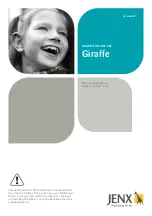
QM-7 SERIES SERVICE MANUAL
PAGE 4.7
JANUARY 2012
SUNRISE MEDICAL
Section 4
Example of R-10 Fault Isolation
1. In this example, the right motor has been
disconnected. (
fi
gure.4.7.1). The hand control
displays the fault and the power chair will not
operate.
2. To troubleshoot this problem, refer to Table 1,
Error Codes.
3. From this error we see that the problem is
being recorded in the PM (Control Module).
4. The hand control tells us that motor 2 (M2) has
the error and it is with the brake circuit. Motor 2
is the right motor.
5. Table 1 informs us to, “Verify that the right motor
is connected to the control module. Complete the
Motor and Gearbox Inspection section of this
manual.”
6. The next step is to complete the Motor and
Gearbox Inspection section of this manual and
retest.
Power Chair Will Not Drive Full Speed
An external micro-switch is mounted next to the actuator in the rear of the lift system. This micro-
switch is closed when the tilt is lowered. The closing of this micro-switch sends a signal to the control
module through the 6-pin connector located on the back of the tilt. The presence of this signal informs
the control module that the tilt is less than 20 degrees and that maximum speed should be used. If
the tilt is more than 20 degrees, the switch opens and invokes “creep” speed. Creep speed is a
predetermined speed programmed at time of manufacture. Creep is indicated by a “turtle” on either
the hand control or Omni.
1. “Creep” speed as indicated by the turtle on the
hand control (A)
fi
gure 4.7.2). If the turtle symbol
persists after a power down, proceed to step 2.
2. Tilt the seating system to the rear, enough to
gain access to the micro switch and proceed to
Step 3.
fig. 4.7.2
A
fig. 4.7.1
















































